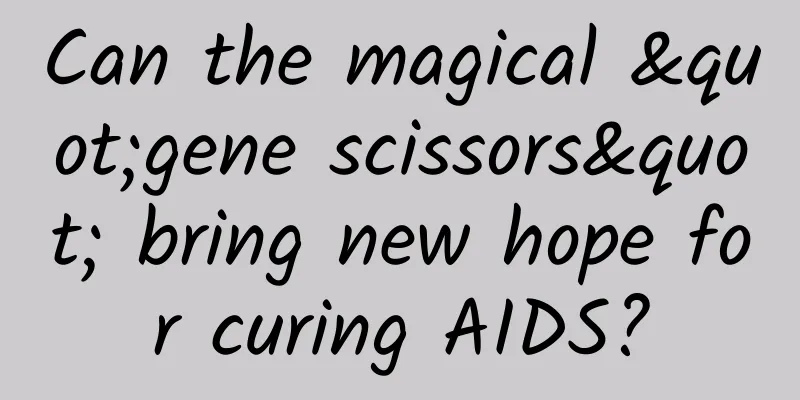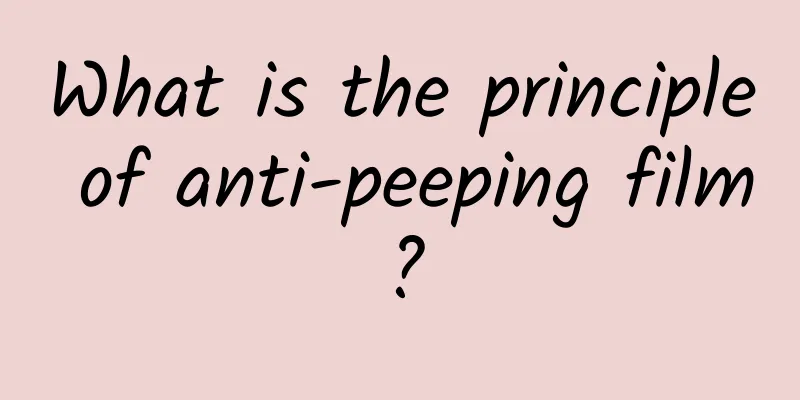Can the magical "gene scissors" bring new hope for curing AIDS?

|
Author: Duan Yuechu AIDS is a serious immune system disease caused by infection with the human immunodeficiency virus (HIV). Since the 1980s, AIDS has become a major public health issue worldwide. According to the World Health Organization, as of the end of 2019, 38 million people worldwide were infected with HIV and more than 32 million people had died from diseases caused by AIDS. Gene editing is a technology that modifies the human genome. The most famous and widely used one is the CRISPR gene editing technology. CRISPR stands for clustered regularly interspaced short palindromic repeats, an immune system naturally found in certain bacteria and archaea. Scientists use the Cas9 protein in the CRISPR system to precisely edit, add or delete genetic sequences. The emergence of CRISPR technology has brought a revolution to the field of gene editing because it is more efficient, precise and cheaper than traditional gene editing technologies. CRISPR can be used to treat a variety of diseases, including genetic diseases, cancer, infectious diseases, etc. It has been successfully used in the laboratory to change the genes of human babies, transform animals for research, and treat patients with sickle cell disease. Excision BioTherapeutics is a biotechnology company focused on gene editing therapy. They recently conducted an experiment to try to use CRISPR technology to permanently cure HIV. The goal of the experiment is to implant the CRISPR gene editing tool into the body of an HIV carrier and use it to cut and destroy the HIV in the patient's body, thereby achieving a therapeutic effect. In this experiment, scientists at Excision BioTherapeutics first extracted immune cells from three HIV carriers and introduced CRISPR gene editing tools into these cells. Through precise gene editing, the CRISPR system will recognize and cut the DNA of HIV, rendering the virus inactive. The edited cells will be reinjected into the patient's body to replace the previously infected cells. Preliminary experimental results show that immune cells edited with CRISPR genes successfully eliminated HIV. This means that CRISPR technology has the potential to treat AIDS. However, the current experiment is small in scale, and further research and clinical trials are still needed to verify its safety and effectiveness. The success of this experiment is expected to provide a new breakthrough in the treatment of HIV. If CRISPR technology can be proven to be safe and effective, it is expected to become a reliable treatment method and bring good news to AIDS patients. References: https://www.technologyreview.com/2023/10/25/1082306/gene-editing-crispr-hiv-experiment/ |
<<: Why did the old man, who was in good health, die soon after falling down?
Recommend
How to balance Swift and Objective-C? Let's look at @objc and Dynamic
Although the original intention of Swift language...
What are the factors that affect the ups and downs of App Store rankings?
In the past half month, the rankings of many APP ...
Lanzhou WeChat ordering software mini program, how much does the WeChat mini program for ordering food cost?
Everyone is familiar with WeChat mini-programs . ...
Do you know what is a healthy weight for a person? Regardless of gender, read this...
Who said that? Who says you need to lose weight! ...
How do I remotely manage my server?
After renting or hosting a server, you do not nee...
Revealing the secrets of second-hand new phone dealers: Xiaomi and Apple are the most popular
As the autumn rains come, the weather gets colder...
Mobile Map Technology Sharing
I am currently working in a domestic map navigati...
Huawei customer service responds to Android license expiration: Google services can still be updated but cannot be used on new phones
According to foreign media reports, the temporary...
Efficient employment class for emotional counselors, achieving a side job with a monthly income of 50,000+ [audio course]
Efficient employment class for emotional counselo...
With the same budget, which one will have better conversion rate between Douyin and Baidu?
Since 2016, when information flow entered the cou...
A complete analysis of social media methods for App operation and promotion!
In the era of mobile Internet, traffic is king. I...
Three major differences between mobile and web conversion rates
For marketers, there are big differences between m...
Integrated marketing practice analysis!
Integrated marketing is not a tactic, it is a str...
How to improve product stickiness and reduce user churn rate?
The Internet has entered the second half today. U...









